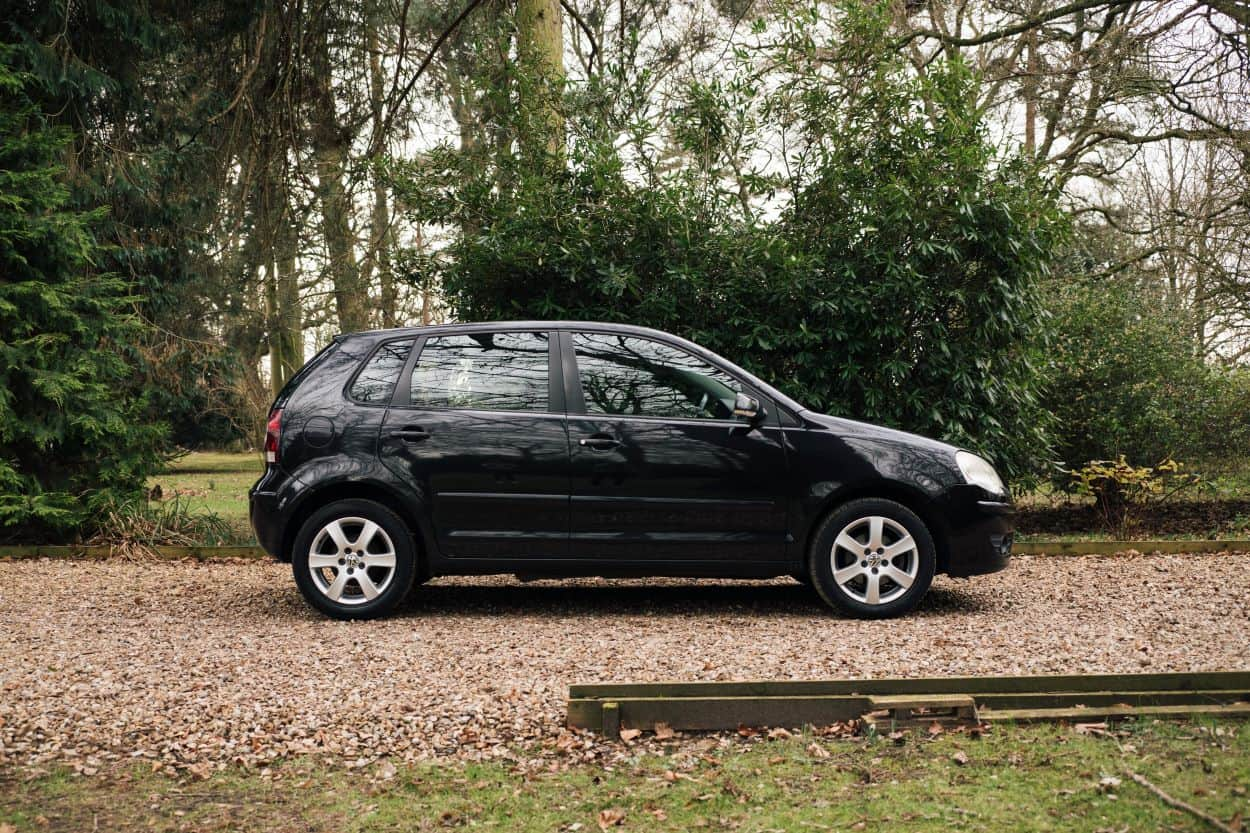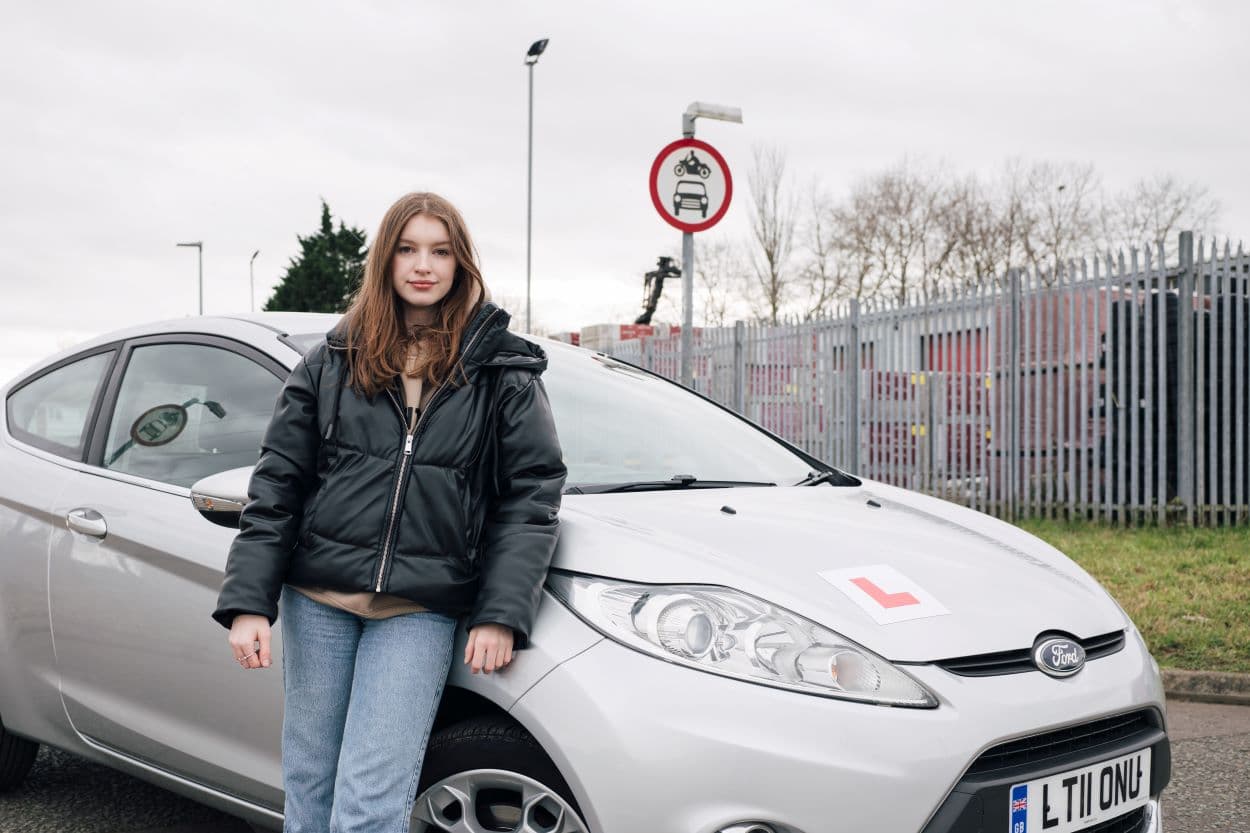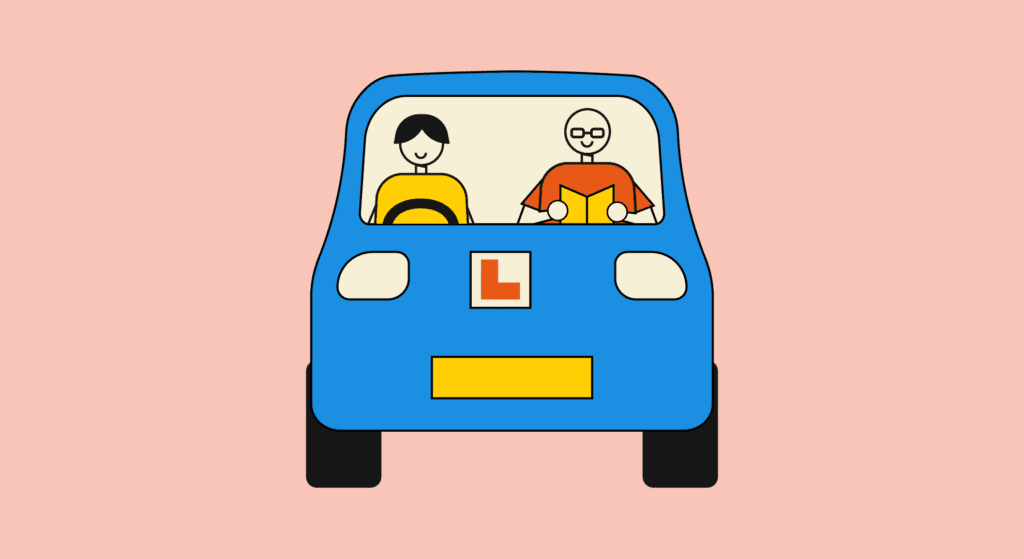When your child turns 17, chances are they will be champing at the bit to learn to drive. But teaching your teenager – or anyone, for that matter – to drive is one of the most difficult experiences you can go through, and the process can be just as stressful for the new driver too.
Extra practice with friends or family is associated with a higher driving test pass rate, so practising with a supervisor really does pay off despite the stress. Read our tips on teaching someone to drive in this blog.
1. Make sure you’re legally allowed to teach your friend or family member

In order to teach someone to drive, you must meet a number of different criteria, such as driving for at least three years and holding a full, valid driving licence. Find out all the requirements in our blog on supervising a learner driver. If you do not meet this requirements, you cannot take your teen or friend out to practise driving.
2. Make sure you both have valid insurance in place
You’ll need to make sure your vehicle is road-worthy before you take the learner driver for a drive. This includes having a valid MOT certificate for the vehicle, displaying learner plates, and taking out car insurance for both yourself and the learner driver. This is to ensure that you have the correct insurance in place in the event you need to take over the driving.
3. Discuss the driving session with the learner driver before you get in the car

It’s a good idea to discuss the driving session with the learner driver before you take to the road. This is because the teen will be more aware of the progress they’ve made with their driving instructor, as well as any manoeuvres they want to practise more with you.
Plan out where you’ll drive and consider looking at a map with them ahead of time to preempt any hazards or road signs they might need to prepare for.
4. Set a good example to your teen while you drive
Set a good example to your teen while you are driving as they will be heavily influenced by how you drive, as well as your judgement and behaviour while on the road. This is especially true if you’re their caregiver. It’s important that you display the correct driving technique so they don’t pick up bad habits that could cause them to fail their driving test.
5. Make sure you’re up to date with the Highway Code

Make sure that, before you give a learner driver advice, you are up to date with the Highway Code and current driving practices. Highway Code rules change or are added almost every year, so it’s important to check this beforehand so you don’t teach them any habits that have become illegal since you learned to drive.
6. Stay patient with the learner driver; we were all learners once
Don’t lose your patience with the driver, even if they keep making basic mistakes or appear not to be listening to you. Anger will make the situation worse and could cause them to make dangerous mistakes. Equally, if something goes wrong, don’t panic. Instead, calmly talk them through the situation or offer to take control of the car if needed.
7. Try not to talk down to the learner driver

Don’t talk down to your teenager or treat them like a 10-year-old, and avoid negative comments based on other traits you know them to have. Heap them with praise when they drive well and reinforce good habits by reiterating the procedures they’ve correctly grasped.
A driving session is all about driving. It’s not an opportunity to berate your teenager about other issues in their life while they’re trapped with you in the car and unable to escape. Try to avoid turning the radio on too – it may seem relaxing, but it can be very distracting for new drivers.
8. Try to practise in different conditions
Give the person you’re teaching the chance to experience a wide range of different road conditions, including, for instance, rush hour, quiet afternoons, sunny weather, rain, busy roads, and quiet side streets. Of course, the different types of conditions you practise in will depend on when you’re both free for a session, so if practising in different conditions isn’t possible, don’t stress too much.
9. Make sure the person you’re teaching is taking lessons with a driving instructor

It’s usually best for individuals to learn to drive with a professional driving instructor. This is because driving instructors have been trained on how to teach students how to drive. They also tend to be completely up to date on driving test laws and any new regulations.
Remember that you can’t take money from learner drivers to teach them if you’re not a professional instructor. Doing so is illegal.
10. Don’t cover anything your learner driver hasn’t learned in their lessons
Try to find out what your teen has been learning with their instructor and consolidate their learnings by practising these things with them instead of attempting to teach them a new skill. Your car won’t have the same dual controls as the driving instructor’s car, so it’s usually safer for the learner to practise new manoeuvres in the instructor’s vehicle instead.
11. Consider organising a mock test for the learner

If the learner driver is close to taking their driving test, it’s a good idea to organise a mock test so they can see how prepared they are to take their test. Look up how a driving test is structured to help with this.
Get affordable learner driver insurance and protect your no claims bonus (NCB)
Before you take your teen out for a drive, it’s essential to ensure that you’re covered for any problems that might occur while your child is behind the wheel.
We offer car insurance for learner drivers from just 65p a day. Rather than including a learner on a parent, family member or friend’s policy, this cover offers separate, fully comprehensive insurance that pays out in the event of a claim and also protects the car owners’ NCB. Policies can be taken out on a month-to-month basis, so learners only pay for the cover they need until they’ve passed their test.
Call us on 0800 369 8590 or book a callback for a fast and affordable quote.

